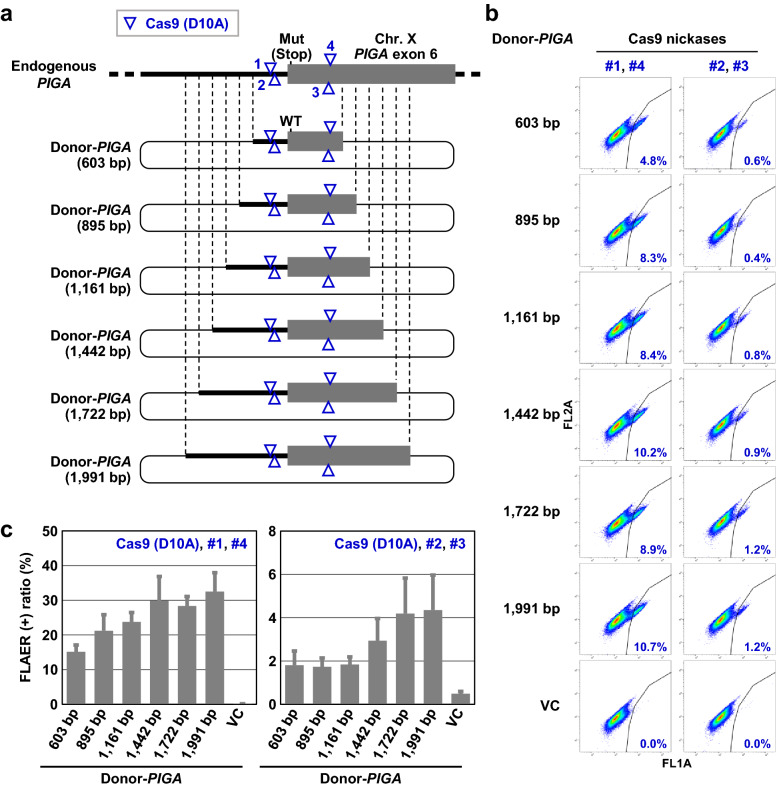Figure 1.
Efficient targeted knock-in via TPN is supported by 1700–2000-bp donor DNAs. (a) Donor plasmids carrying various lengths of homology with a genomic region surrounding the human PIGA intron 5/exon 6 boundary. The lengths of homology in respective donor plasmids (Donor-PIGA) are noted in parentheses. Numbers from 1 through 4 indicate distinct Cas9 nickases and correspond to #1 through #4 in (b,c). Hereinafter, bold lines and gray boxes in schematic representation indicate portions of PIGA intron 5 and exon 6, respectively, unless otherwise noted. Thin and dotted lines indicate backbones in plasmids and homologous regions, respectively. Mut (Stop): a nonsense mutation; WT: wild-type sequence. (b) Representative dot graphs obtained from FCM analyses. Percentages of FLAER-positive cells are denoted in the graphs. VC represents a vector control. Hereinafter, FL1A and FL2A indicate fluorescence signals measured at 530 ± 15 nm and 585 ± 21 nm, respectively, under 488-nm laser excitation. (c) Graphical representation of the results. Data represent mean and SEM values from three independent experiments.

